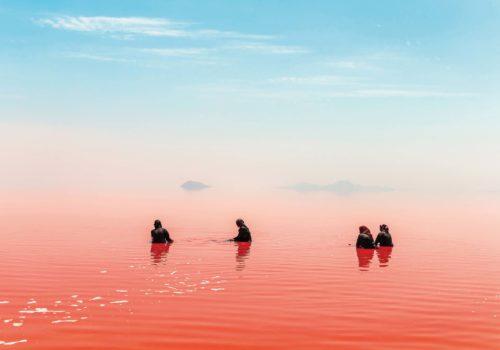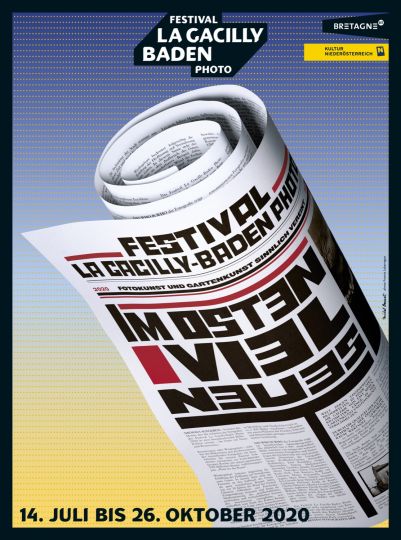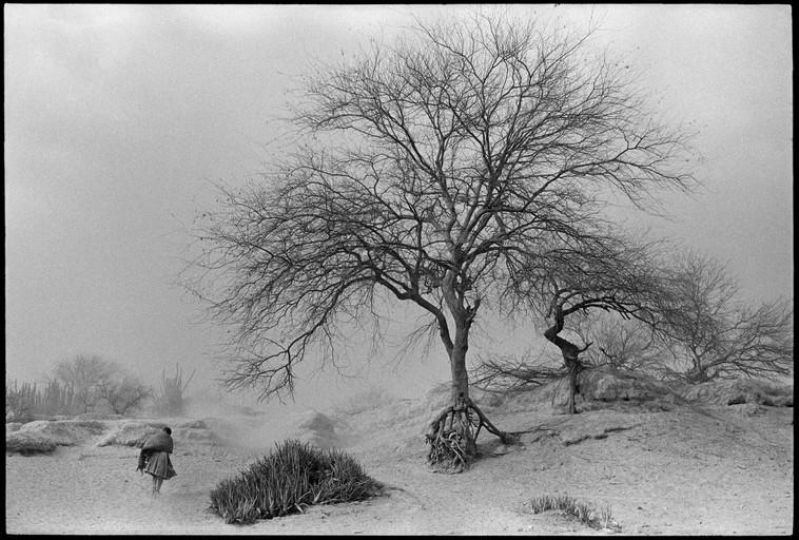The Brittany-based festival La Gacilly is entering its sixth year of collaboration with the town of Baden in Austria. On this occasion, The Eye of Photography talked with their directors, Lois and Silvia Lammerhuber in Baden about their next edition, which will open in June.
When and how did this cooperation between La Gacilly and Baden come into existence ?
LOIS : I was a friend of Jacques Rocher whom I had met in Paris. In 2017 I did a book on baobas, which was presented at La Gacilly. I thought the festival was really good and that it would be amazing to have it in Baden. I talked about it with Jacques and he came to see the town. Baden is an old-fashioned spa town, it was the summer retreat of the Habsbourg family. Jacques liked it and we decided to try it out for three years. We are now in the sixth year.
Each year, the festival travels from Brittany to Baden. How do you adapt the scenography to your town ?
LOIS : It is complicated because Baden has great infrastructures, but is an old heritage town where everything is protected. But every year we manage to make it fit. And then we have the necessity to add things on as Baden is bigger. Concentrating in one area, we show the exhibitions from La Gacilly (around 20 shows) and then we add on about ten from our side. This year, we’ll put forward Austrian photographers, with two key photographers : Horst Stasny and Rudolf Koppitz.
Is there a historical relation between Baden and photography ?
LOIS : not that I know. But there is a link with Napoleon !
SILVIA : the link is Lois. Him living and working here is the main reason why photography and this festival came to Baden. But as a matter of fact, Austria is not such a photographic country like France or Germany. We have very few media, photographers don’t have many opportunities to show their work and earn money. But the interest of the audience is very important here, because of the topic and the theme, because it is outside and, of course, free.
What kind of audience does La Gacilly Baden attract ?
LOIS : All kind of audience and not necessarily photographers. Out of the 280.000 visitors we have, I would say only 20.000 are photographers. The rest is just anyone who is interested to learn about our world and environment.
SILVIA : One point that is very important to us is that the people who are living in Baden accept the festival very well and are very curious about each edition.
LOIS : We are very proud that La Gacilly in Baden is one of the few carbone free festivals. We have been carbone free for three years now and we received donations from individuals in Baden to contribute. This is an important proof of commitment for us.
What are the big themes of this year’s edition ?
La Gacilly always has two topics : one is about human condition with each edition focusing on a new geographical part. This year we will be putting forward Bangladesh, Pakistan, Afghanistan and Iran through ten exhibitions by photographers from these areas. The other half is dedicated to the condition of the world and the impact as well as the reason of human interferences with the world.
Could you tell us more about the bilateral photo project of the Morbihan schools in Brittany and the ones in Lower Austria ?
This is very important because it puts forward the next generations. Sixteen schools from Lower Austria and the same number in France work together on one topic, which this year is « openings ». They are shown side by side but originally there is no connection between the two countries, they receive the same brief but work on it separately. It is alway beautiful to see that the thinking of these young people is going in the same direction. They embrace the same values.
What will happen on the Long Night of Photography ?
LOIS : We celebrate the birth of photography, in August 1839. There will be a gala diner and then a night on stage with prizes, conversations to reflect upon photography and presentations from photographers such as Brent Stirton, George Steinmetz, Hans Silvester and Sarah Caron. It is part of the media days where a hundred journalists and photographers come from all over Europe.
Are there any other satellite events or activities ?
LOIS : There are exhibitions shown in Tulln, Celje and Bratislava as well as the Global Peace Photo Award at the Parliament. This is not directly linked to La Gacilly — our collaboration with the Parliament dates back to eleven years — but it often happens during the festival. We organised this award with Photographische Gesellschaft (PHG) in partnership with UNESCO, Austrian Parliament, Austrian Parliamentary Reporting Association, International Press Institute (IPI), German Youth Photography Award, World Press Photo Foundation, POY LATAM, LensCulture and Vienna Insurance Group. The IPI nominates someone speaking about the conditions of journalism, then five winners receive the Global Peace Photo Award and one of them receive the award of Peace Image of the Year worth 10.000 euros from the hands of the Nobel Peace Laureate of the respective Year.
SILVIA : We started this award ten years ago to make something for Austrian photography, to make it more visible and international.
What are your highlights for this year’s edition ?
SILVIA : If I had to choose two I would say Iranian photographer Maryam Firuzi and Austrian photographer Rudolf Koppitz.
LOIS : For me it would be Stephan Gladieu and Véronique de Viguerie. Sarah Caron’s work is also very important, she had access to all kinds of areas in Afghanistan. So many good names are involved such as Abbas and Paul Almasy. The young ones are very creative too : Alisa Martynova, Maxime Taillez, Chloé Azzopardi. They are so many, it’s hard to make a choice.
More information
https://www.festivalphoto-lagacilly.com/festival-photo-la-gacilly-baden



















